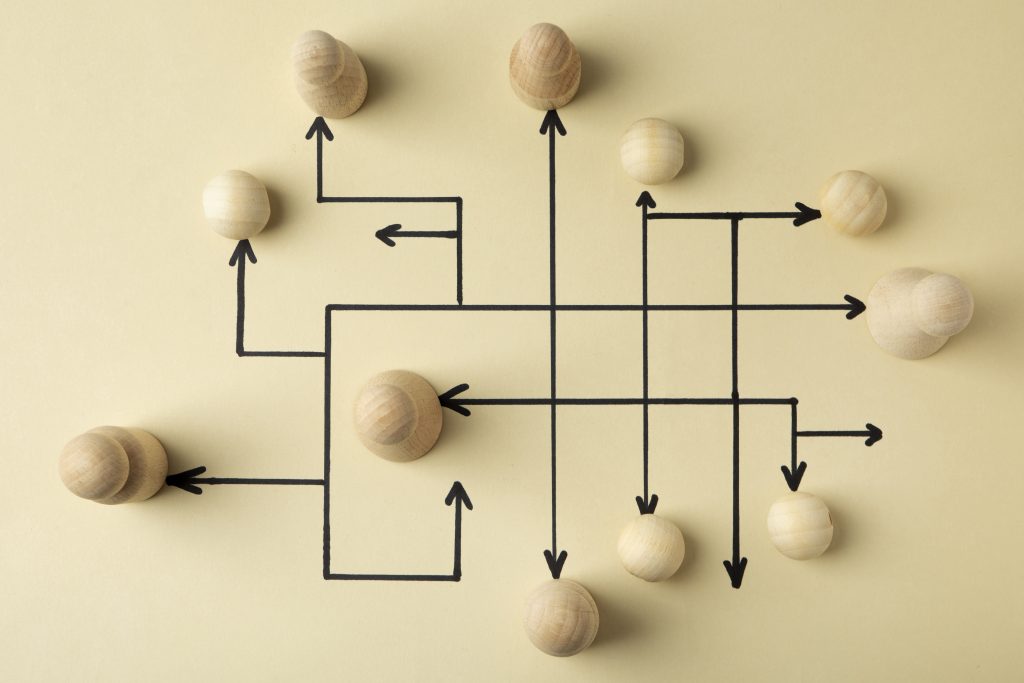The adage “practice makes perfect” has long been applied to skills development and habit formation, but emerging cognitive science trends suggest a deeper truth: structure emerges from repeated use. This concept is gaining significant traction in fields ranging from personal productivity to education and workplace dynamics. It is becoming clear that the more frequently we engage in an activity, the more structure we develop around it, shaping how we think, work, and create.
In this article, we’ll explore how structure emerges from repeated use, its implications for cognitive development, productivity, and creativity, and how this principle can be applied to enhance personal growth and organizational efficiency. Whether you’re aiming to improve mental clarity or optimize workflows, understanding how structure develops through repetition can unlock new insights and strategies for success.

The Science Behind Repetition and Structure
1. The Role of Repetition in Neuroplasticity
Neuroplasticity refers to the brain’s ability to reorganize itself by forming new neural connections. Repetition plays a crucial role in this process. Every time we engage in an activity, our brain strengthens the neural pathways associated with it, making the process more efficient and automatic.
- Neural Pathways and Habit Formation: When you practice a skill—like learning a language or playing an instrument—your brain forms pathways. With each repetition, these pathways become stronger, allowing you to perform the task with greater ease over time.
- Implicit Learning: Through repeated use, tasks that once required conscious effort, such as driving or typing, become second nature. This is because repetition strengthens neural structures that support these actions.
Key Insight: Repetition strengthens neural connections, leading to more efficient performance and the development of mental structures that support cognitive tasks.
2. Repetition and the Formation of Mental Frameworks
As we repeat activities, our mental frameworks begin to take shape. These frameworks are patterns of knowledge and strategies that we use to solve problems and make decisions. Through repeated use, we develop stronger conceptual structures in our minds.
- Pattern Recognition: Repetition helps our brains become better at recognizing patterns. This skill is critical in various tasks, from solving math problems to forecasting market trends. The more we engage with these tasks, the more we develop efficient mental structures for pattern recognition.
- Cognitive Efficiency: The more often we repeat a task or thought process, the more efficiently our brains perform it. This is why experts in any field often become quicker and more precise with repetition—repeated use leads to the formation of more complex mental frameworks.
Key Insight: Repetition enables our brains to recognize patterns and build frameworks that improve decision-making and problem-solving.
Repeated Use and Productivity
3. Building Productive Routines
One of the most practical applications of repetition is in the formation of productive routines. Repetition of certain actions or behaviors creates habits that support long-term efficiency and success.
- Daily Routines and Cognitive Load: Establishing consistent routines reduces cognitive load. For example, having a structured morning routine (such as exercise, meditation, or reading) allows you to focus your mental energy on more complex tasks throughout the day. Repetition of these routines frees up cognitive resources and reduces decision fatigue.
- Habit Formation: According to behavioral psychology, repetition is essential for forming habits. As we repeat certain actions, the brain forms neural structures that support automaticity. Once a habit is formed, it requires less conscious effort, which makes us more efficient.
Key Insight: Repeated use of certain actions forms productive routines, reducing cognitive strain and enhancing overall efficiency.
4. The Power of Repetition in Time Management
Time management is another area where structure emerges from repeated use. By consistently applying time-management techniques, we can develop better ways to allocate time and energy.
- The Pomodoro Technique: This popular time-management method involves working in intervals (typically 25 minutes), followed by a short break. The more frequently you use this technique, the more your brain becomes accustomed to working in focused intervals, developing a structured approach to completing tasks.
- Task Prioritization: Repeatedly practicing task prioritization helps us create a mental structure for decision-making. Using frameworks like the Eisenhower Matrix regularly helps identify urgent versus important tasks, improving time management over time.
Key Insight: Repeating time-management strategies helps build mental structures that support more efficient use of time and resources.
Repetition and Creativity: The Surprising Link
5. Repetition as a Tool for Enhancing Creative Thinking
While creativity is often associated with spontaneity, repetition plays a key role in fostering creative thinking. Repetition allows individuals to refine their ideas, experiment with different approaches, and push boundaries without reinventing the wheel each time.
- Creative Practice: Artists, writers, musicians, and designers often engage in repetitive practice to hone their craft. As they repeat certain techniques or processes, they gain a deeper understanding, allowing them to explore new ideas within a structured framework.
- Exploration Within Structure: Interestingly, structure enhances creativity. The more familiar you are with a technique, the more freedom you have to explore variations and push boundaries within that framework. Repetition leads to mastery, and mastery unlocks greater creative freedom.
Key Insight: Repetition leads to mastery, and mastery fosters creativity by providing a structured foundation for innovative ideas.
Applying the Concept of Repetition to Learning
6. How Repetition Enhances Conceptual Learning
Conceptual learning—understanding and applying abstract ideas—becomes stronger with repetition. Engaging with new information regularly reinforces our understanding and increases our ability to apply that knowledge effectively.
- Spaced Repetition: This method involves reviewing information at increasing intervals. It helps strengthen memory retention and understanding by revisiting key concepts over time. Spaced repetition solidifies learning by reinforcing mental structures that make long-term retention easier.
- Active Learning: Active learning techniques, such as problem-solving and self-testing, benefit from repetition. The more frequently you engage with these methods, the more robust your mental frameworks become, making it easier to recall and apply knowledge.
Key Insight: Repetition strengthens conceptual learning, improving recall and application of knowledge through methods like spaced repetition and active learning.
The Emerging Trend of Repetition in Workplace Innovation
7. Repetition Drives Innovation and Efficiency in the Workplace
In the workplace, repetition is often linked to routine tasks, but it can also be a powerful tool for driving innovation. Repeating processes allows employees and teams to refine their approaches, optimize workflows, and create new solutions.
- Iterative Development: In software development, the concept of iterative development is essential for creating innovative products. Repeated testing, feedback, and revision lead to continuous improvements, ultimately resulting in more effective solutions.
- Continuous Improvement: Companies like Toyota have embraced the principle of Kaizen, or continuous improvement, which relies on repetition to refine processes. By regularly revisiting tasks and seeking areas for optimization, organizations become more efficient and innovative.
Key Insight: Repetition in the workplace fuels innovation by allowing for continuous refinement and process optimization over time.
Conclusion
Structure emerges from repeated use, whether in cognitive development, productivity, creativity, or learning. By repeatedly engaging in tasks, we form mental frameworks that improve efficiency, creativity, and decision-making. Whether you are trying to develop a new skill, manage your time more effectively, or foster innovation in the workplace, repetition is the key to long-term success.
By understanding the power of repetition, we can harness its benefits to drive personal growth, enhance learning, and optimize our work processes. Embrace repetition, and let it guide you toward mastery and continuous improvement. innovative project, embracing the power of repetition can lead to lasting growth and success.
Reference
- Spacing Effect & Memory Consolidation, https://en.wikipedia.org
- Learning over time enhances memory and the survival of new neurons, https://pmc.ncbi.nlm.nih.gov
- Distributed Practice: Reinforcing your claims about repetition boosting efficiency, https://en.wikipedia.org









